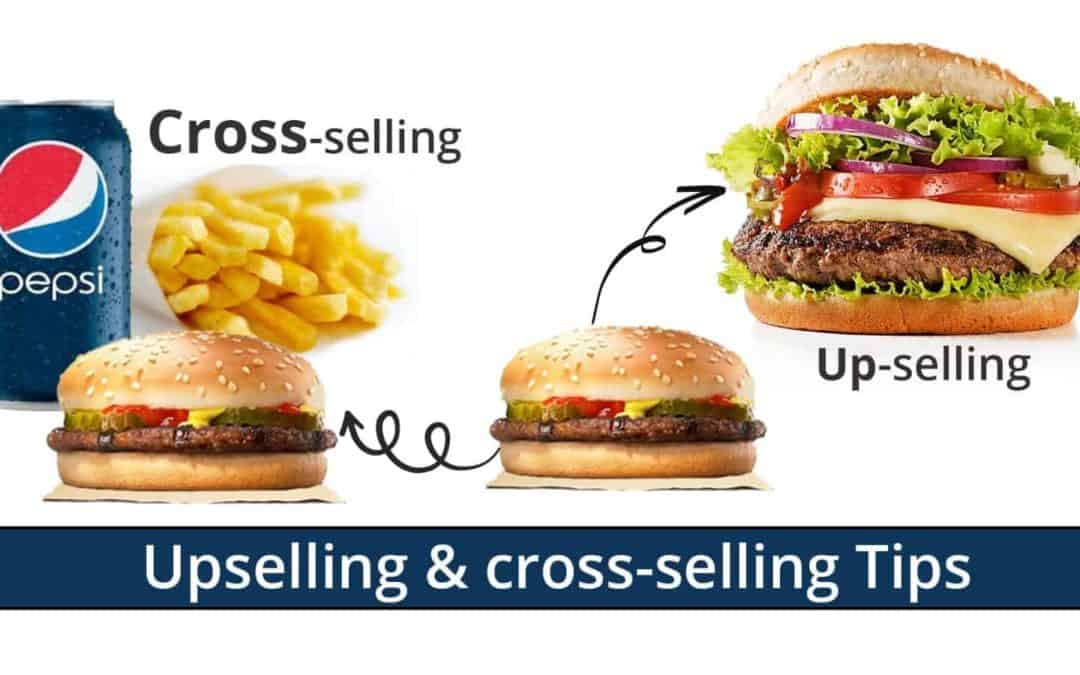Your eCommerce store can gain revenue from two types of customers: New customers and existing customers. In both cases, you can dramatically increase sales by offering helpful and relevant product recommendations in the form of upsells or cross-sells. On SmartSeller ecommerce platform, we offer upselling and cross-selling features to all of our subscription plans. Feel free to try out our FREE ecommerce platform.
Different between upsell and cross-sell
Upsell means you offer the same type of product at an increased price. This could be a more robust, more feature-rich, bigger, or more customized version of the product. “Would you like to upgrade to a larger size?” is a simple example of an upsell from takeout restaurants.
In contrast, when you offer additional product recommendations that complement the original purchase, you are offering a cross-sell. So upsells relate to different versions of the same product. Cross-sells relate to different products.
Consistently upselling and cross-selling to new and existing customers can increase revenue double digits, depending on your business. Not using this time-tested marketing strategy means you’re leaving money on the table.
5 Upselling and Cross-selling Tips
Here are five ways to maximize revenue from upselling and cross-selling.
1. Make It Relevant
Any products or extra features you recommend as upsells and cross-sells must be relevant to the original purchase. If someone buys yogurt from your online grocery, don’t cross-sell them with toilet cleaners.
The buyer should see the natural relationship between what they’re buying and the additional options you’re presenting.
2. Make It Helpful
If someone buys a set of steak knives, it helps that person if you also offer a place to store them. Cross-selling them with decorative steak knife holders isn’t just relevant, it’s helpful. You’re making life simpler by solving two problems at once.
Even better, you can offer a bonus set of knives or other cutlery as an upsell. Again, you’re helping by providing a relevant offer.
3. Make It Desirable
Neil Patel recommends a three-fold approach to upselling and cross-selling: Your upsells should be your most reviewed, most relevant, or best-selling products and services.
Why? Because these workhorses have already proven to be your most desirable products. Since so many other people have bought and reviewed them, you know these are more likely to appeal to your current shoppers too.
4. Make It Urgent
When applicable, you should take every opportunity to limit the availability of a product or service, either by limiting quantity or limiting the purchase window.
For a service or client-based business, “I can only accept 12 new private clients” increases the urgency to buy now.
For product-based businesses, you may have some products with limited shelf-life. Some food products are only available at certain times of year. You might have only manufactured a fixed number of a particular product. Or you have discontinued or altered it from the original, meaning that whatever remains of the original product supply represents the last opportunity to buy it.
Highlight these exclusive and limited opportunities as part of your upsell or cross-sell offers. This is the ‘use it or lose it’ concept.
5. Make It Easy
There are two sides to this. It should be easy for you and for the customer.
For the customer, make it easy to act on the upsell. For instance, don’t require them to start a membership just to claim the offer. But make it easy on yourself, too. With SmartSeller online store, the technology that powers your upselling and cross-selling strategies is already in place.
But to fully leverage the power of upselling and cross-selling, activate another feature that elevates your eCommerce store’s capabilities by making this even easier.
Let’s explore in more detail a new and powerful feature for your eCommerce upselling and cross-selling strategy in our upcoming articles.

